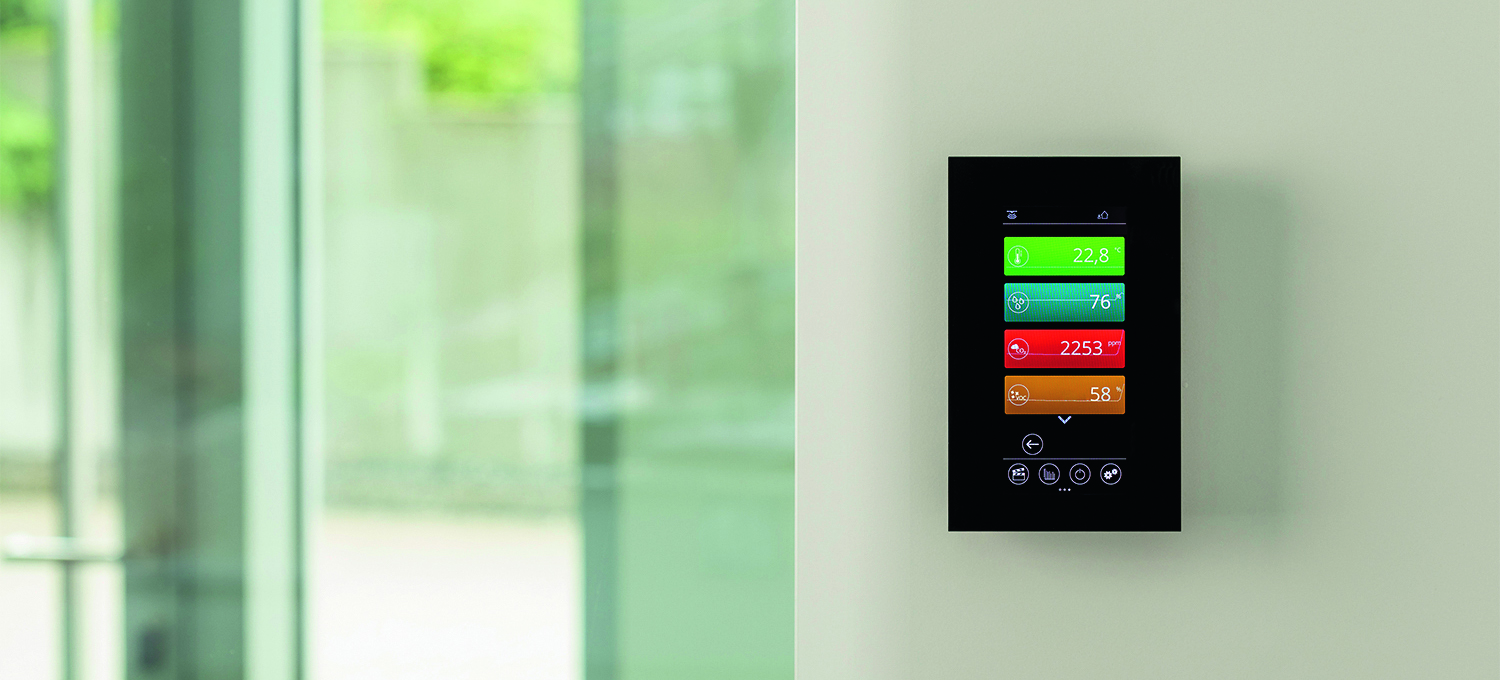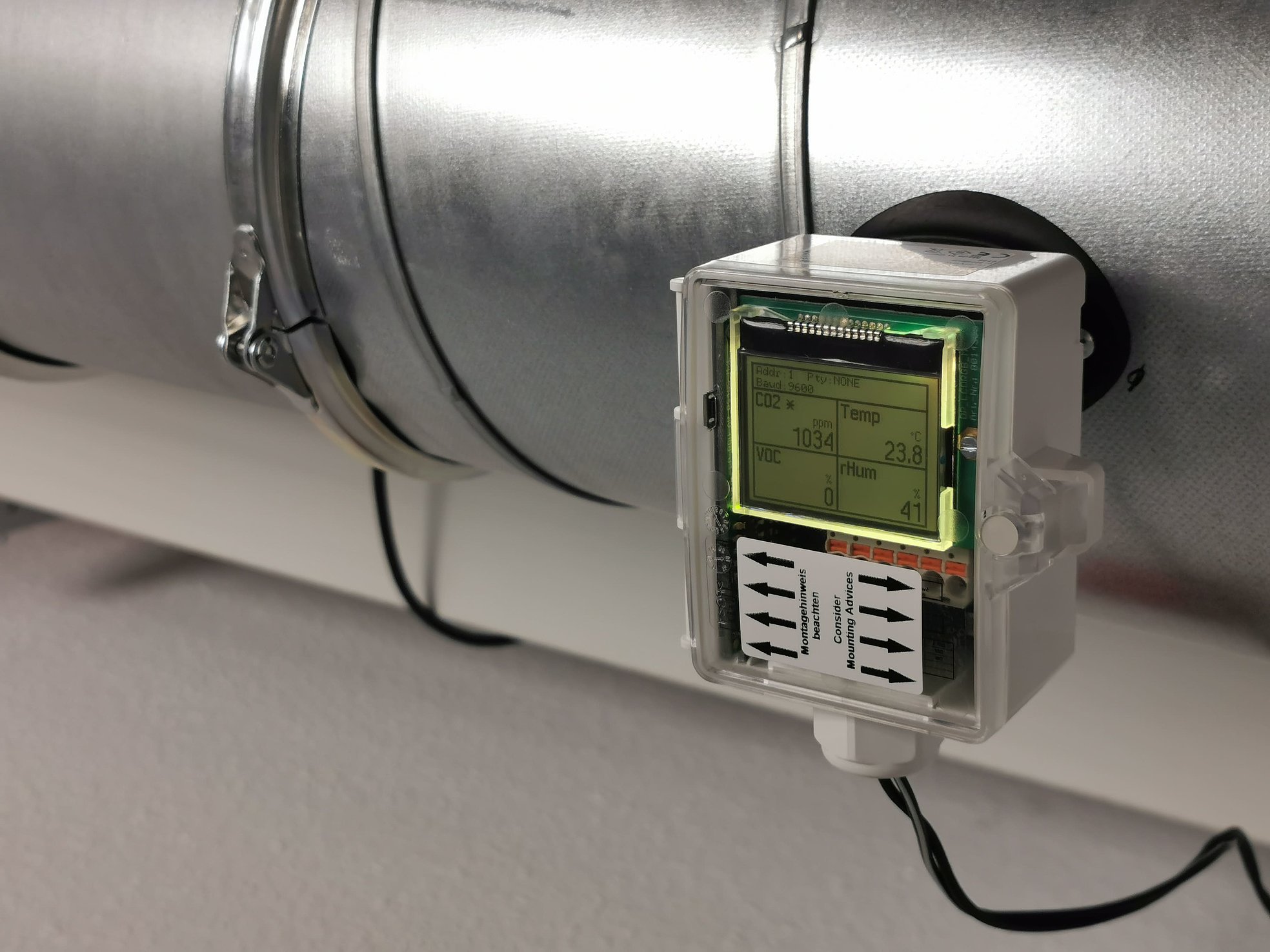Combined sensors – energy-efficient, demand-oriented, economical

The energy-efficient climate control of office and commercial buildings would be impossible without high-performing sensor technology. It regulates the reliable detection and control of climate conditions, thus making demand-oriented and at the same time economical control of key values temperature, humidity and air quality possible. The aim is to create a comfortable indoor climate for the tenants of the building according to DIN EN 13779 - i.e. a temperature between 20 to 26°C and a relative humidity between 30 to 65%. The investment in high-quality sensor technology and intelligent control through building management systems is worthwhile: With the help of big sensor data, resources are deployed in an energy- and cost-efficient manner and incidental costs can be reduced.
Often, sensors for efficient air-conditioning are mounted in the ventilation duct. Since this means that they are only accessible to a limited extent, they must comply with various requirements that make their use practicable in the long term. Primarily, a high quality product with precise measurements, a long product life and a high degree of maintenance-free operation is essential. It is inevitable to protect sites against the formation of moisture and condensation, for example, caused by air-conditioning systems. The larger the object, the more important becomes an installation-friendly product design that integrates seamlessly. This contributes to significantly reducing time and costs of installation, especially when large quantities are involved.
An attractive option is the room installation. One of its benefits is that the installed equipment is always accessible, also for end users. In the event of irregularities or maintenance, they ensure quick and low-effort access. The advantages from the operator's point of view are obvious – considering also the aesthetic product design. The more parameters are monitored in a room with integrated sensors, the more they become noticeable. Especially in design-oriented buildings, this can positively affect the appearance and well-being with respect to the overall air quality.

Kanalfühler LK+ CO2+VOC
Starting already during the planning phase, multi-sensors ensure significantly reduced efforts and lean processes, e.g. through reduced space requirements and optimized wiring. Further advantages are the reduction of fire load due to significantly less cables, the reduction of the risk of wiring errors and the comparably low acquisition costs. Room control panels with integrated multi-sensors are particularly attractive in terms of costs and aesthetics. They can integrate up to four sensors into the BMS in just one enclosure, keeping up the architect’s interior design concept.
The question, which type of communication is recommended for the integration of the sensors into the BMS must be answered individually. For smaller projects with only few rooms, the analog installation is usually most economical. With an increase in project size and sensors, the use of multi-sensors with a BUS-communicating interface is recommended: through just one additional pair of cables, data of numerous sensors can be communicated to the BMS via e.g. RS485 Modbus, BACnet (IP or MS/TP), KNX and LON.
BUS-communicating devices also offer a number of further advantages. For example, they convince with the possibility of transmitting important additional data and reduce the number of inputs on the controller side. A short calculation example may illustrate that this can be a real cost factor: While ten analog 0..10 V multisensors with four measured variables each require a total of 40 inputs, this number is reduced to a single bus interface with ten BUS-communicating multi-sensors.
From the operator's point of view, they also offer another key advantage: they allow settings to be changed via PC or via mobile phone or tablet, thus enabling flexible, location-independent 24/7 monitoring of building automation. Based on the actual status data, service and maintenance routines can be suggested based on historical data. This optimizes the reliability of the BMS and ensures, that the room climate is controlled economically at all times.

